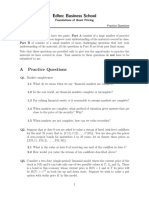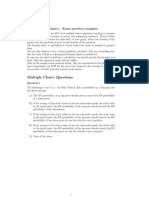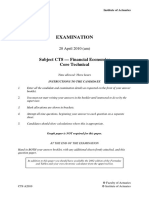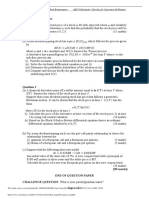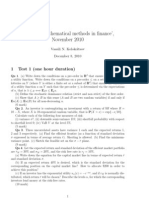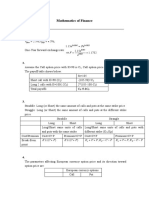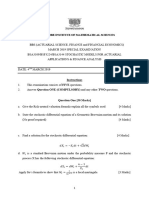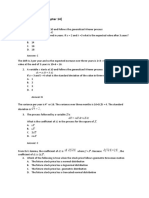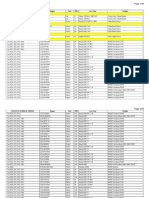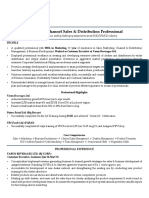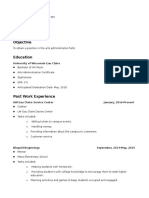0% found this document useful (0 votes)
78 views2 pagesTutorial II PDF
This document contains a tutorial with 12 questions on stochastic models in finance. The questions cover topics such as quadratic variation, geometric Brownian motion, option pricing, and early exercise of American options. Specifically, it asks the student to show that quadratic variation increases over time, calculate quadratic variation for a given process, derive processes followed by functions of geometric Brownian motion processes, price European call and put options, and analyze the early exercise of American options.
Uploaded by
girishCopyright
© © All Rights Reserved
We take content rights seriously. If you suspect this is your content, claim it here.
Available Formats
Download as PDF, TXT or read online on Scribd
0% found this document useful (0 votes)
78 views2 pagesTutorial II PDF
This document contains a tutorial with 12 questions on stochastic models in finance. The questions cover topics such as quadratic variation, geometric Brownian motion, option pricing, and early exercise of American options. Specifically, it asks the student to show that quadratic variation increases over time, calculate quadratic variation for a given process, derive processes followed by functions of geometric Brownian motion processes, price European call and put options, and analyze the early exercise of American options.
Uploaded by
girishCopyright
© © All Rights Reserved
We take content rights seriously. If you suspect this is your content, claim it here.
Available Formats
Download as PDF, TXT or read online on Scribd
/ 2

